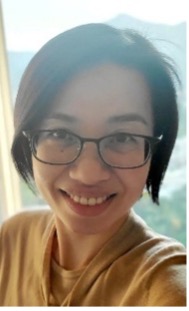CHILDES Mandarin BJCMC Corpus

|
Ziyin Mai
Department of Linguistics and Modern Languages
Chinese University of Hong Kong
maggiezymai@cuhk.edu.hk
website
|

|
Jingyao Liu
City University of Hong Kong
jingyliu27-c@my.cityu.edu.hk
|
>

|
Shanshan Yan
School of Chinese as a Second Language
Peking University
shanshanyan@pku.edu.cn
|

|
Virginia Yip
Linguistics and Modern Languages
Chinese University of Hong Kong
vcymatthews@cuhk.edu.hk
website
|
| Participants: | 48 |
| Type of Study: | crossectional, naturalistic |
| Location: | Beijing |
| Media type: | audio |
| DOI: | doi:10.21415/R1D0-BY71 |
Mai, Z., Shang, M., Liu, J., Yan, S., Matthews, S., & Yip, V. (2024)
Acquiring Chinese in US, Hong Kong and Beijing: three new corpora and
three verbal structures. Paper presented at the XVIth International
Congress for the Study of Child Language (IASCL-2024), July 15-19,
Charles University, Prague, Czech Republic.
In accordance with TalkBank rules, any use of data from this corpus
must be accompanied by at least one of the above references.
Project Description
The Beijing Child Mandarin Corpus (BJCMC) was constructed to address
the absence of systematic documentation of child Mandarin speech in
naturalistic contexts at preschool age (3-6 years), and to serve as a
monolingual baseline for the Child Heritage Chinese Corpus (CHCC) and
the Hong Kong Mandarin-English Child Corpus (HKMECC). Participants (n =
48) were recruited in Beijing, China in 2023, mainly from the Haidian (n
= 31) and Chaoyang Districts (n = 9). An effort was made to recruit
children from families with mid-high socioeconomic status (SES), which
was indexed through the mother’s education level. The children included
in the current corpus were raised in Mandarin-dominant households and
educated in mainstream Mandarin-medium schools in Beijing; they had not
received direct and substantial exposure in other languages (for
example, English) or Chinese varieties other than Mandarin at the time
of participation. All participants were healthy without suspected or
diagnosed language disorders.
For each participant, two research
assistants (RAs, native speakers of Mandarin and postgraduate students
majoring in Chinese language education at Peking University) made
one-off visits to the participants’ home to i) record naturalistic
RA-child interaction in Mandarin (30 minutes per session) and ii)
administer the Mandarin receptive vocabulary subtest of the Wechsler
Preschool and Primary Scale of Intelligence—Fourth Edition (WPPSI-IV;
Wechsler, 2013) and if the child had some English input, Peabody Picture
Vocabulary Test-Fifth Edition (PPVT-5) (Dunn, 2019). Two participants
were excluded in the current corpus due to higher-than-acceptable score
in the English vocabulary test (12th percentile) and low score in the
Mandarin vocabulary test respectively. During the recording session, one
assistant, after a brief warm-up session to establish rapport,
interacted with the child in spontaneous playing or book-reading
activities and were told to encourage the child to lead the conversation
as much as possible; the other assistant recorded the interactions and
remained silent in the recording. A Sony video camera was used by the
assistants to record the interactions. The vocabulary tests were
conducted either before or after the interaction recording.
The current
corpus contains a total of 48 children (25 girls) with corresponding
transcripts distributed across 16 specific data points (3 children per
data point) from 3;0 to 6;9, with 3-month intervals between adjacent
points. The recordings were manually transcribed and checked by native
speakers of Mandarin trained by the Childhood Bilingualism Research
Centre at the Chinese University of Hong Kong, following the conventions
established for CHCC and HKMECC. More information of individual
participants is presented in this table .
Acknowledgements
We would like to express our gratitude to Brian MacWhinney, Director of
CHILDES for his expertise, advice and technical support. We thank the
participating families for opening up their homes to us and allowing our
students and research assistants to interact with the children and
record the interactions.
Special thanks go to the students and Research
Assistants who participated in the recording sessions and/or transcribed
the speech data: Mengyao Shang, Jiaqi Nie, Yue Cao, Yue Chen, Ranee
Cheng, Yingyu Su, Letu Li, Yishan Guan, Chengxi Li, Zihan Wang, Xuan
Wang, Yue Li, Yihan Zhao. We gratefully acknowledge the support and help
of our lab members and collaborators: Yuqing Liang, Xuening Zhang,
Stephen Matthews, Yang Zhao.
The research was supported by the General
Research Fund from the Hong Kong Research Grants Council (“Input and
experience in early trilingual development” awarded to Ziyin Mai as PI,
Project no. 14615820), and a National Social Sciences Project awarded to
Shanshan Yan as PI and Ziyin Mai as Co-I (“Acquisition of Modal
Expressions by Preschool Mandarin English Bilingual Children”, Project
no. 24CYY081).



